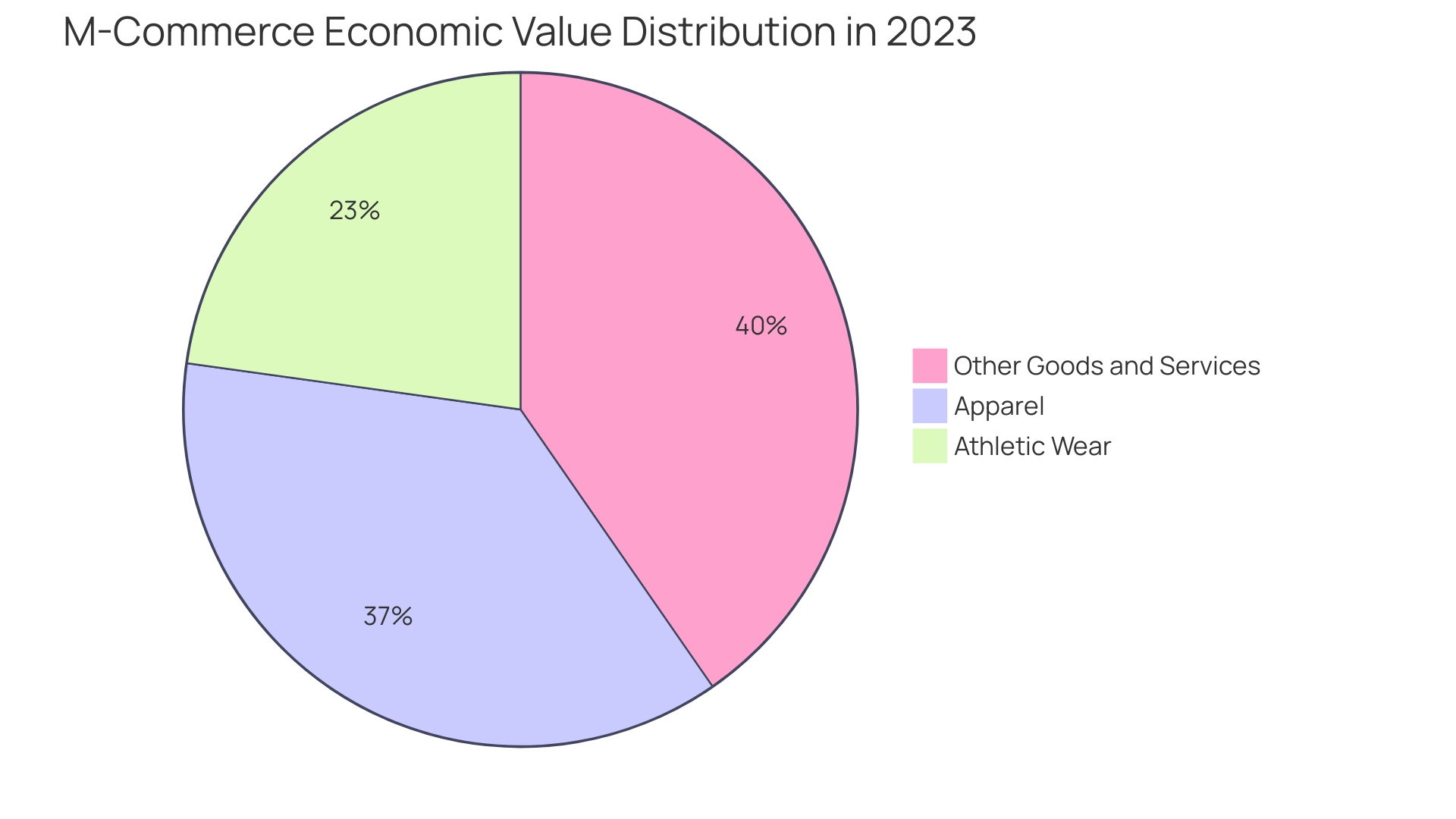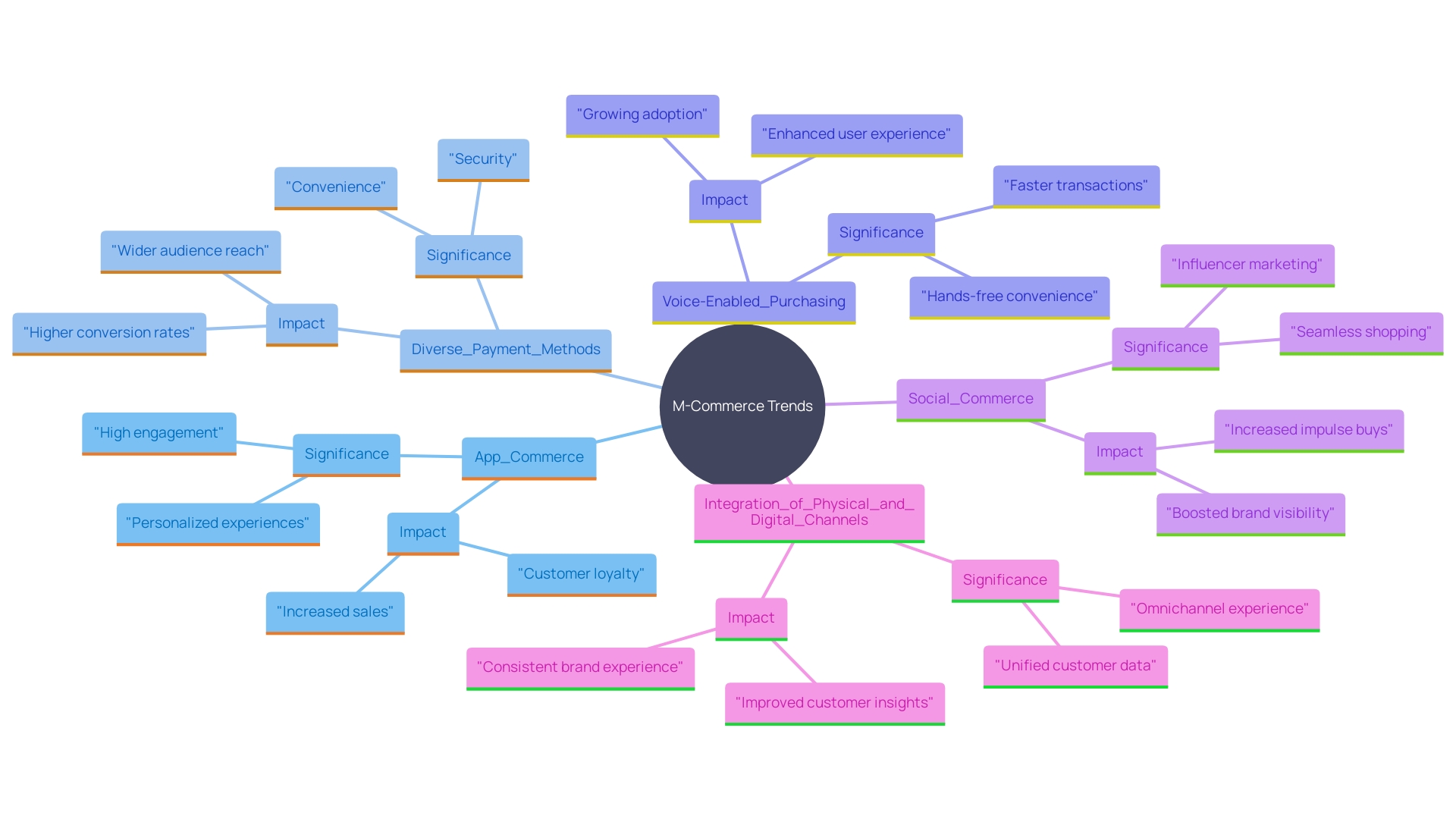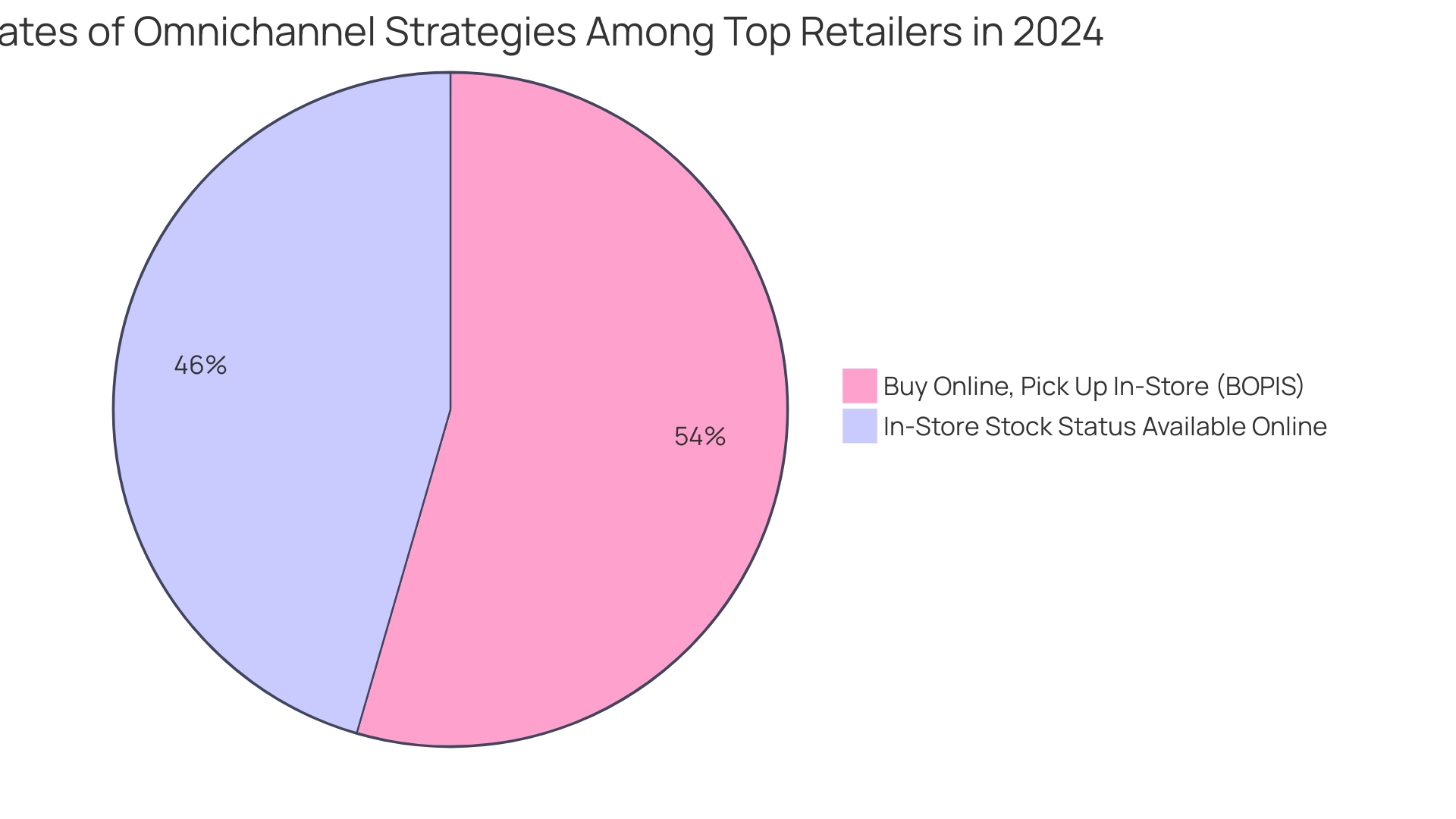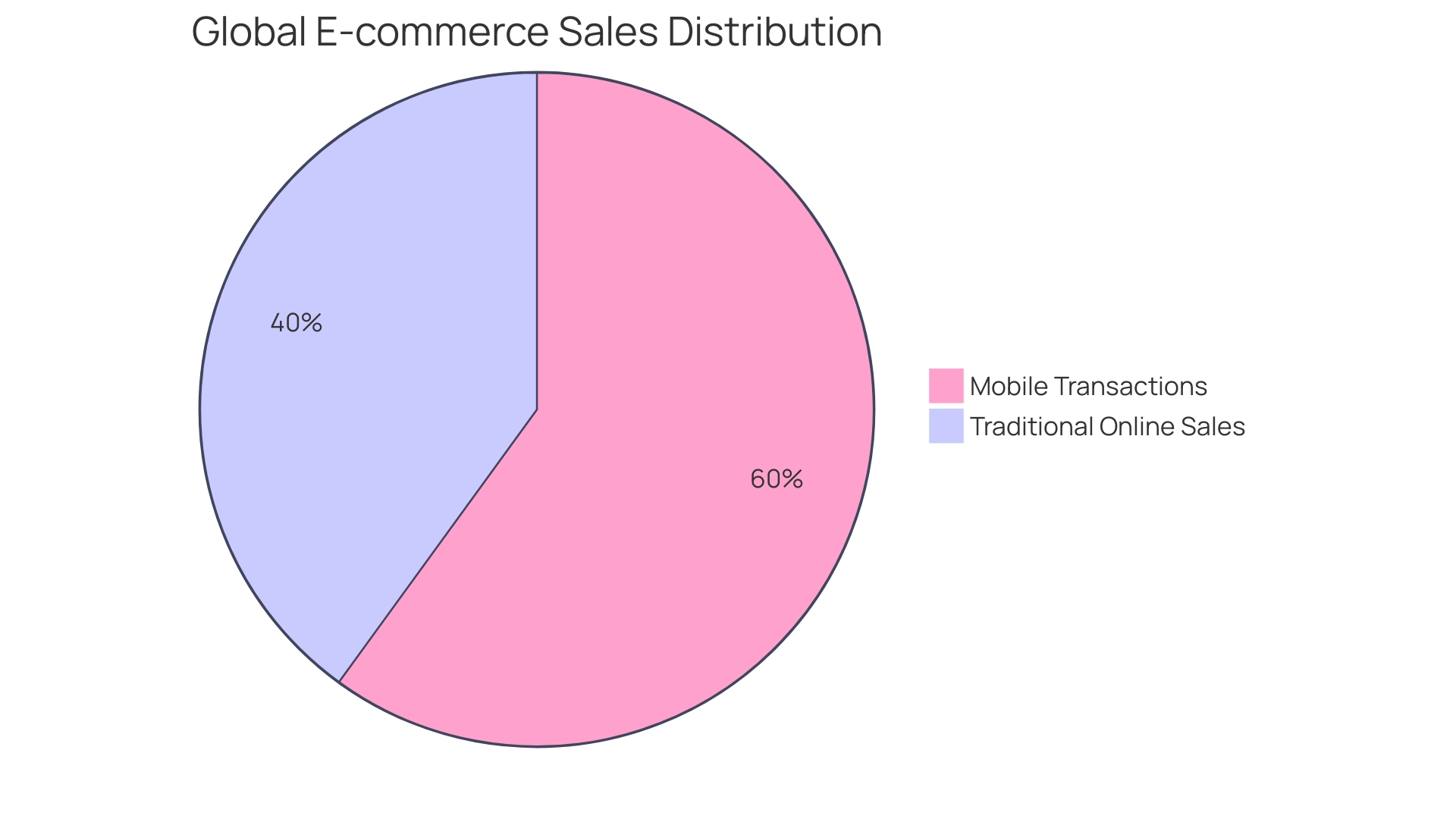Introduction
Mobile commerce, or m-commerce, is revolutionizing the way consumers buy and sell goods and services, using mobile devices such as smartphones and tablets. This modern approach to retail allows for unprecedented convenience, with mobile-optimized applications and websites enabling consumers to shop anytime, anywhere. The widespread availability of mobile internet, now accessed by 4.7 billion people globally, has played a crucial role in this shift, driving m-commerce to generate a staggering $5.7 trillion in economic value by 2023.
This article delves into the multifaceted world of m-commerce, exploring its definition, benefits, key trends, omnichannel integration, and future projections. By understanding these aspects, businesses can harness the power of mobile commerce to expand their reach, engage customers more effectively, and stay competitive in an ever-evolving digital marketplace.
Definition of M-Commerce
M-commerce, or commerce conducted via handheld devices, involves the buying and selling of goods and services through gadgets like smartphones and tablets. This contemporary form of commerce empowers consumers to shop at their convenience, utilizing mobile-optimized applications and websites. The prevalence of internet access on portable devices has been pivotal in driving m-commerce growth. Indeed, as of 2023, 4.7 billion individuals worldwide are utilizing internet access on their phones, contributing to an astounding $5.7 trillion of economic value, which is equivalent to 5.4% of the global GDP. 'The growth of smartphone payments, such as Twint in Switzerland, underscores the swift acceptance and incorporation of technological solutions in daily transactions.'. Moreover, research shows that a considerable segment of consumers, particularly in apparel and athletic wear, favor a smooth interaction across both online and physical channels, highlighting the significance of m-commerce in the retail environment.

Benefits of M-Commerce
M-commerce offers numerous advantages for businesses and consumers alike. For businesses, it offers the chance to connect with a broader audience, improve customer interaction, and stimulate sales through focused marketing strategies. Mobile devices have become integral to consumers’ lives, influencing how they access information, shop, and interact with brands. Research indicates that 72% of fashion and sportswear consumers favor shopping both online and in physical locations, highlighting the necessity for a smooth omnichannel approach.
Consumers benefit from the convenience of shopping on-the-go, access to exclusive mobile deals, and personalized shopping experiences that cater to their preferences. As Keith Kirkpatrick from The Futurum Group points out, clients want the ability to order products on their phones and pick them up in-store, blending physical and digital channels. This reflects the growing trend of “phygital” commerce, which became prominent during the COVID-19 pandemic and continues to evolve.
Furthermore, businesses that are digitally innovative are more likely to attract and retain customers. 'The incorporation of AI in portable commerce is poised to improve the purchasing journey by allowing more tailored and effective service.'. 'With the worldwide gaming industry expected to hit $1065 billion by 2032, portable platforms are not only for purchasing but also for participation and interactive activities.'. This offers a dynamic chance for companies to take advantage of the expanding commerce landscape.
Key Trends in M-Commerce
Several transformative trends are shaping the m-commerce landscape. One significant trend is the rise of app commerce, where native applications are designed to offer seamless shopping experiences, streamlining the path to purchase. 'Marketplaces designed primarily for smartphones are also gaining popularity, prioritizing users on these devices to enhance satisfaction and engagement.'.
The adoption of various payment methods is crucial, facilitating swift, simple, and secure transactions. 'According to recent data, cellular billing has seen significant growth, driven by smartphone proliferation and increasing financial inclusion, especially in emerging markets.'. The mobile payments industry, segmented into NFC, QR-based, online digital, and text-based payments, continues to expand, with players like PayPal and Visa leading the charge.
Voice-enabled purchasing is another emerging trend, utilizing artificial intelligence to improve user interaction and simplify the buying process. 'Social commerce, which incorporates shopping interactions directly into social media platforms, is becoming essential, as consumers increasingly demand convenience and immediacy in their purchasing journeys.'.
Keith Kirkpatrick, research director for The Futurum Group, highlights the importance of blending physical and digital channels: "Brands need to be everywhere. It’s a more efficient way of doing things, and it puts the customer first." This indicates the wider trend towards 'phygital' interactions, which gained momentum during the pandemic and show no signs of slowing down.
Incorporating these trends is essential for staying competitive in the rapidly evolving m-commerce arena. By integrating app commerce, mobile-first strategies, diverse payment options, voice-enabled purchasing, and social commerce, businesses can meet consumer expectations and drive growth.

Omnichannel Integration
Omnichannel integration is essential for providing a smooth purchasing journey across different platforms. By leveraging m-commerce, businesses can connect with clients through multiple touchpoints, ensuring a consistent experience whether they're using a mobile app, website, or shopping in-store. This approach is vital in today's retail landscape, where consumer behavior is increasingly channel-agnostic. For example, MediaMarkt, Europe's largest electronics retailer, integrates online and offline channels effectively, enabling individuals to research online and purchase in-store.
The importance of omnichannel strategies is underscored by the 2024 Omnichannel Report from Digital Commerce 360, which highlights the growing adoption of options like buy online, pick up in-store (BOPIS), with a 78.3% adoption rate among top retailers. This seamless integration enhances client satisfaction and loyalty, as it provides flexibility and convenience. Moreover, ensuring in-store stock statuses are available online, a feature adopted by 65.4% of top retailers, exemplifies how omnichannel tactics can meet evolving consumer expectations.
Industry leaders recognize the transformative power of omnichannel strategies. As one expert noted, 'We are in the early stages of the true omnichannel era, where personalization and service mirror those of traditional mom-and-pop stores, enabled by advanced technology.' This evolution reflects a shift towards offering personalized experiences at scale, driving both client engagement and operational efficiency. By embracing omnichannel integration, businesses can navigate the complexities of modern retail and build lasting customer loyalty.

Mobile Commerce Statistics and Future Projections
The significance of m-commerce in the retail sector is underscored by a plethora of compelling statistics and trends. At present, more than 30% of the global population participates in online purchasing, adding to the e-retail sector's remarkable worth surpassing $5.7 trillion worldwide. Mobile transactions are projected to constitute an increasingly substantial share of total e-commerce sales, driven by technological advancements and shifts in consumer behavior.
One of the most transformative trends in m-commerce is the integration of augmented reality (AR) and hyper-personalized marketing strategies. These innovations promise to elevate the mobile shopping journey, making it more interactive and tailored to individual preferences. As Keith Kirkpatrick, Research Director at The Futurum Group, highlights, the blending of physical and digital channels—a trend that gained momentum during the COVID-19 pandemic—continues to shape consumer expectations, necessitating that brands maintain a seamless presence across all touchpoints.
In addition, the rise of e-commerce spans multiple industries, from retail and consumer goods to travel and hospitality. This broad landscape enables businesses to connect with a varied clientele and provide a wide array of products and services. For instance, MediaMarkt’s recent launch of Europe’s largest electronics shop in Hamburg illustrates how retailers are integrating technology, innovation, and in-store experiences to establish flagship locations that serve both online and offline shoppers.
As the m-commerce sector continues to grow, businesses must leverage these technological advancements and consumer trends to stay competitive. By doing so, they can unlock new opportunities for growth and innovation, ensuring they meet the evolving needs of their customers.

Conclusion
The exploration of mobile commerce highlights its transformative impact on the retail landscape. M-commerce not only streamlines the buying and selling process but also offers unprecedented convenience for consumers, allowing them to shop seamlessly through mobile devices. With over 4.7 billion people accessing mobile internet, the economic implications are significant, contributing to a staggering $5.7 trillion in value.
Businesses that embrace mobile payment solutions and provide a unified shopping experience across channels are better positioned to engage consumers and drive sales.
The benefits of m-commerce extend beyond mere convenience. Companies can leverage targeted mobile marketing strategies to reach a broader audience and enhance customer engagement. The rise of omnichannel integration further emphasizes the necessity for brands to create cohesive experiences that blend online and offline shopping.
By adopting innovative trends such as app commerce, voice-enabled shopping, and social commerce, businesses can meet the evolving expectations of consumers and remain competitive in a rapidly changing marketplace.
Looking ahead, the future of m-commerce appears promising, with technological advancements like augmented reality and hyper-personalized marketing set to redefine the shopping experience. As the sector continues to grow, businesses must remain agile, leveraging these trends to unlock new opportunities for growth. By prioritizing customer-centric strategies and embracing the digital transformation, brands can successfully navigate the complexities of modern retail and foster lasting customer loyalty.





